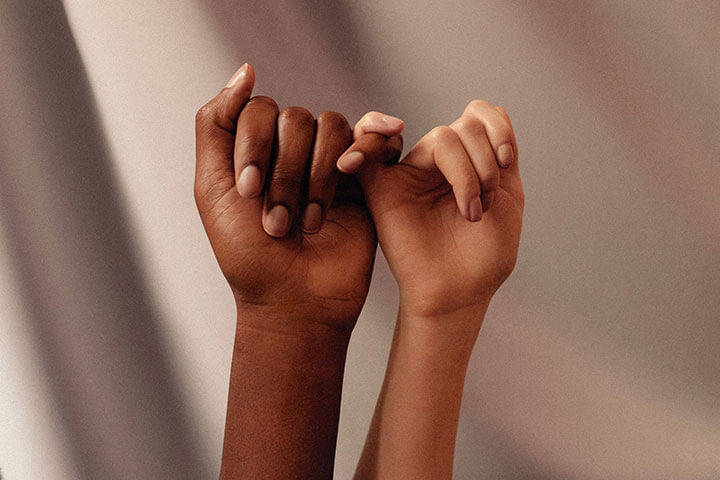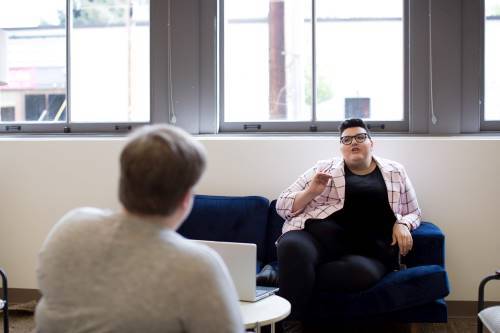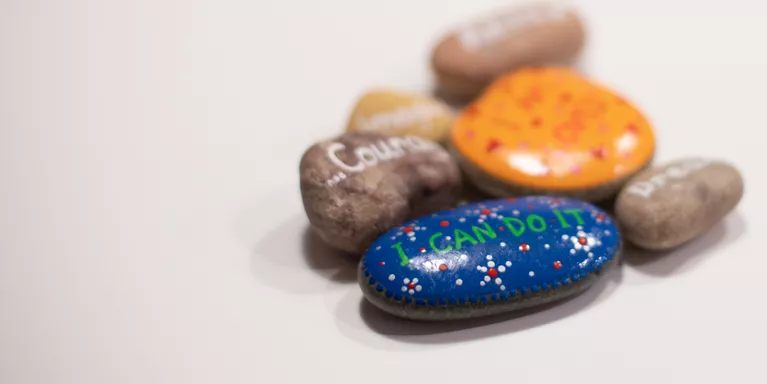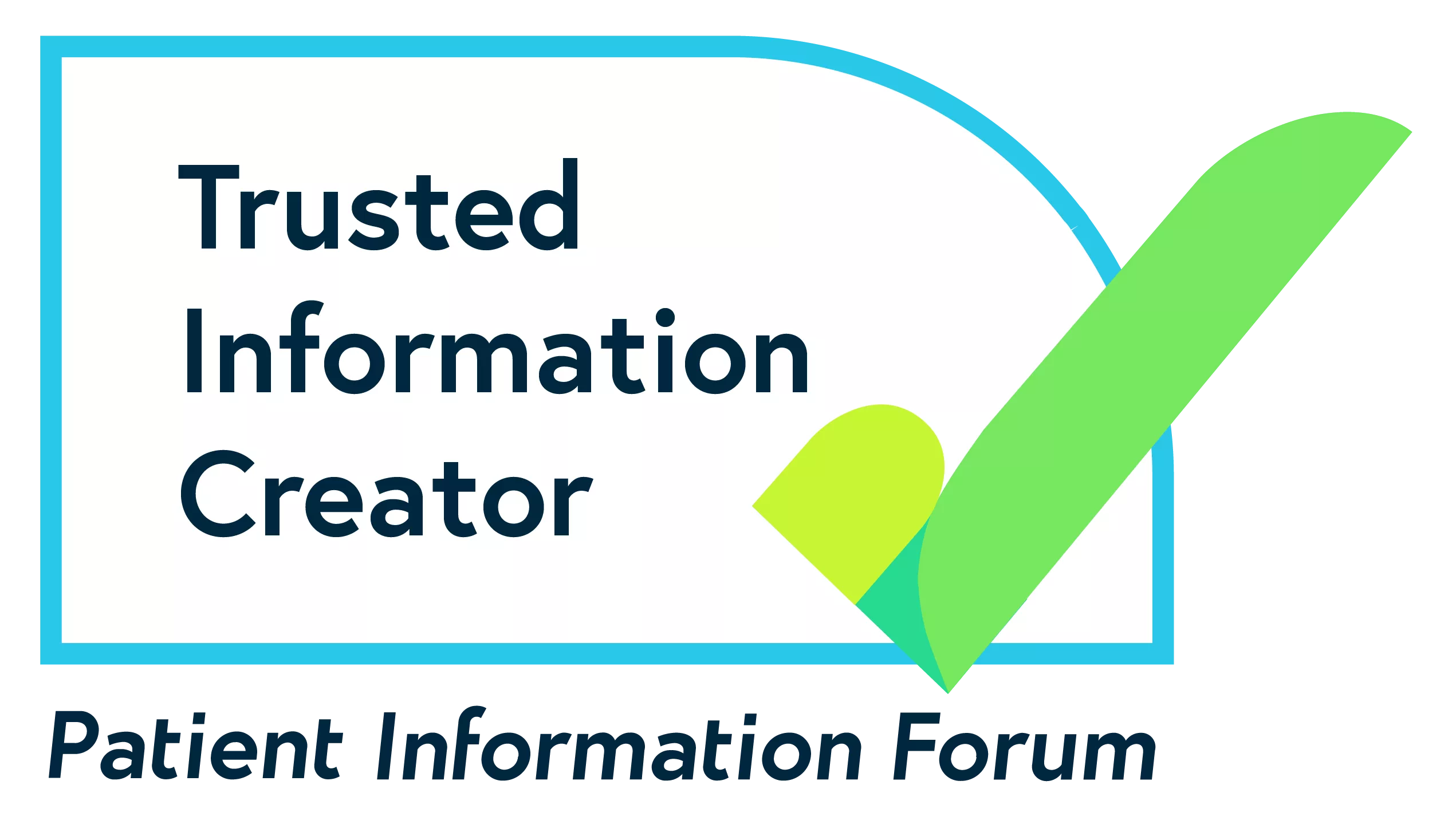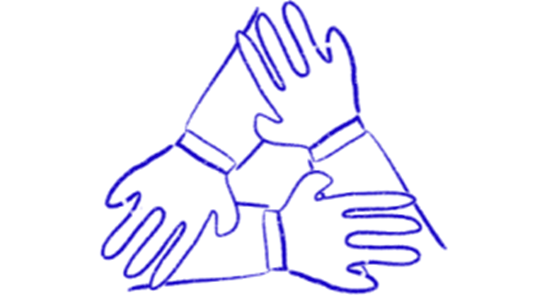Dialectical behaviour therapy (DBT)
Learn about DBT, including what it can treat, what happens in DBT sessions, and how to access it.
What is DBT?
Dialectical behaviour therapy (DBT) is a type of talking therapy. It's based on cognitive behavioural therapy (CBT). But it's specially adapted for people who feel emotions very intensely.
The aim of DBT is to help you:
- Understand and accept your difficult feelings
- Learn skills to manage these feelings
- Become able to make positive changes in your life
'Dialectical' means trying to understand how two things that seem opposite could both be true. For example, accepting yourself and changing your behaviour might feel contradictory. But DBT teaches that it's possible for you to achieve both of these goals together.
Through learning various skills from DBT, I can ride the waves of my depression rather than letting them swallow me.
Experiences of DBT
Watch Debbie and Lechelle talk about getting a BPD diagnosis, and their experience of DBT as treatment.
After a few months I found that, although how I felt and a lot of my symptoms did not change, I was managing them all so much better. I could actually get through days without a crisis.
What does DBT treat?
DBT was originally developed for borderline personality disorder (BPD). But research shows that DBT can also help with problems like:
But everyone experiences therapy differently. Whatever your diagnosis or problems, DBT might not be right for you.
DBT is more likely to work for you if:
- You feel able to do homework between sessions
- You're ready to focus mostly on your present and future, rather than your past
- You feel able to do some sessions in a group with others
Some people like group work, but others find it harder. You might prefer to work with a DBT therapist one-to-one. But unfortunately this is not always offered as an option.
You can talk to your doctor or mental health team about what you would find most helpful. But the options in your local area may be limited.
I was really nervous about the group aspect of DBT. When I started group I wouldn't speak or make eye contact, but everyone was supportive and by the end I was much more confident and even taught a skill session to the other group members.
How can I get DBT?
The main ways to seek DBT are:
- Through the NHS, with a referral from your doctor or mental health team
- With a private therapist
But accessing DBT can be difficult. It isn't available everywhere.
NHS waiting lists can also be very long in some areas. Especially if there is high demand for the service. And many of us can't afford to pay for a private therapist.
If you'd like to access DBT, these pages may help:
- If you want to access DBT on the NHS, our information on how to find NHS therapy explains how to ask your GP for a referral.
- If you want to find private DBT, our information on paying for private therapy has links to directories where you can search for private therapies.
- Some therapy directories include filters for types of therapy or mental health problems. The Counselling Directory includes a filter specifically for DBT under 'type of therapy'.
At first it was really tough, and I wondered what the point of it was going to be. Some of the DBT skills seemed silly to me, but I had committed myself to the process and as time passed, it started to make more sense.
Some therapists may offer you an assessment or pre-treatment phase of DBT. This is where the therapist will look at how suitable DBT is for you.
They might offer you several sessions where you'll learn about DBT. Then if you decide it's the right therapy for you, they'll ask you to make a commitment to the treatment.
Individual therapy usually involves weekly one-to-one sessions with a DBT therapist. Each session lasts approximately 45 to 60 minutes.
The sessions have these goals, with the first being the most important:
- To help keep you safe by reducing suicidal and self-harming behaviour.
- To reduce behaviour that interferes with therapy.
- To help you reach your goals and improve your quality of life by addressing what's getting in the way. This might be mental health problems like depression or hearing voices. Or things in your personal life, like employment or relationship problems.
- To help you learn new skills to replace unhelpful behaviour and help you achieve your goals.
Your DBT therapist is likely to ask you to fill out diary cards as homework, and bring them to sessions. This is for you to track your emotions and actions. And to look for patterns and triggers in your life.
You then use this information to decide together what you will work on in each session. You can find some sample diary cards on the DBT Self Help website.
I’ve learned that emotions are not the enemy. They are useful and have functions. I still feel emotions intensely, but I can now identify them and know how to manage them without using harmful behaviours.
In these sessions, DBT therapists will teach you skills that you apply in your day-to-day life. You will be part of a group, but it is not group therapy – more like a series of teaching sessions.
There are typically four types of skill training:
- Mindfulness. This is a set of skills that focus your attention on the present, rather than worries about the past or the future. DBT sessions may often also start with a short mindfulness exercise. See our pages on mindfulness for more information.
- Distress tolerance. This means learning to deal with crises without harmful behaviour, like self-harm.
- Interpersonal effectiveness. This is a set of skills to help you better manage relationships and learn to deal with conflict.
- Emotion regulation. This is a set of skills you can use to understand, be more aware, and have more control over your emotions.
In group sessions, your therapist might ask you to do group exercises and use role-play. You are also given homework each week to help you practise these skills in your day-to-day life.
DBT often uses telephone coaching to support you in your day-to-day life. This means that you can call your therapist for support between sessions. For example:
- When you're trying to use DBT skills and want some advice on how to use them
- When you need help to deal with an immediate crisis, such as feeling suicidal or wanting to self-harm
- If you need to repair your relationship with your therapist
But you can expect your therapist to set some clear boundaries around this. For example:
- Calls are usually brief, often between 5 and 15 minutes
- Calls should only take place during hours you both agree to
- In some situations, they might ask you to wait 24 hours before calling them
During DBT sessions, therapists will use a balance of acceptance and change techniques:
Acceptance techniques
Acceptance techniques focus on:
- Understanding yourself as a person
- Making sense of why you might do certain things, such as self-harm or misusing drugs
For example, a DBT therapist might suggest that this behaviour has been your only way of coping with intense emotions. So your behaviour makes sense, even if it might cause damage or alarm other people.
Finally someone is saying 'yes it makes sense' rather than 'no that's wrong'.
Change techniques
Change techniques focus on replacing behaviour that harms you with behaviour that helps you. This may mean your therapist:
- Challenges your unhelpful thoughts
- Encourages you to find new ways of dealing with distress
It's not a short term thing. You have to work at it every single day. It's hard to do, and even now, some 2 years after I completed the therapy, I’m still having to work at it.
Can I do DBT by myself?
It can be difficult to learn DBT techniques by yourself. It can also be overwhelming when you start doing DBT. So doing it by yourself doesn't usually work as well as going to sessions run by trained therapists.
Doing a formal course of DBT can help you:
- Stay motivated if you feel like giving up
- Find situations where you can practise DBT skills
- Feel supported and less alone, as others in the group are going through the same process
But you may be able to find DBT self-help materials online, such as on the DBT Self Help website. This might include diary cards, exercises and behavioural analysis sheets.
You could use these to work on your DBT training alongside a formal course, or after finishing one.
Best practice and clinical guidance
- BACP. What is cognitive behavioural therapy (CBT)? [online]. Available at: https://www.bacp.co.uk/about-therapy/types-of-therapy/cognitive-behavioural-therapy/ [Accessed 18 December 2023]
- NHS. (2019). Borderline Personality Disorder. [online] Available at: https://www.nhs.uk/conditions/borderline-personality-disorder/treatment/ [Accessed 18 December 2023]
- NHS. (2022). How it works – Cognitive behavioural therapy (CBT) [online]. Available at: https://www.nhs.uk/mental-health/talking-therapies-medicine-treatments/talking-therapies-and-counselling/cognitive-behavioural-therapy-cbt/how-it-works/ [Accessed 18 December 2023]
- NHS. (2022). Overview – Cognitive Behavioural Therapy [online]. Available at: https://www.nhs.uk/mental-health/talking-therapies-medicine-treatments/talking-therapies-and-counselling/cognitive-behavioural-therapy-cbt/overview/ [Accessed 18 December 2023]
- NICE. (2009). Borderline personality disorder: recognition and management. [online]. Available at: https://www.nice.org.uk/guidance/cg78 [Accessed 18 December 2023]
- NICE. (2022). Depression in adults: treatment and management [online]. Available at: https://www.nice.org.uk/guidance/ng222 [Accessed 18 December 2023]
Sources of specific claims
- Access to DBT via private therapy: Nicholls, K. (2022). Dialectical behavioural therapy. [online] Available at: https://www.counselling-directory.org.uk/dialectical-behavioural-therapy.html#whatisdbt [Accessed 19 December 2023]
- DBT and addiction: Dimeff, L., & Linehan, M. (2008). ‘Dialectical Behavior Therapy for Substance Abusers,’ In Addiction Science & Clinical Science, 4(2): p.39–47
- DBT and depression: Feldman, G., Harley, R., Kerrigan, M., Jacobo, M., &Fava, M. (2009). ‘Change in emotional processing during a dialectical behavior therapy-based skills group for major depressive disorder,’ In Behaviour Research and Therapy, 47(4), p.316-21
- DBT and eating disorders: Lenz, S., Taylor, R., Fleming, M., & Serman, N. (2014). ‘Effectiveness of Dialectical Behavior Therapy for Treating Eating Disorders,’ In Journal of Counselling & Development, 92 (1), p.26-35
- DBT and suicidal behaviours: Linehan, M. (1993.) Cognitive-behavioral treatment of borderline personality disorder. New York: Guilford press
- DBT goals and skill modules: Linehan, M. & Wilks, C. (2018). ‘The Course and Evolution of Dialectical Behavior Therapy,’ In The American Journal of Psychotherapy, 69 (2), p.97-110
- DBT role play: Harline, D. (2016). Five Things To Know About Dialetical Behavioural Therapy [online]. Available at: https://www.alpinerecoverylodge.com/dialectical-behavior-therapy/ [Accessed 26 December 2023]
- DBT sessions: Essex behavioural therapy. Dialectical Behaviour Therapy (DBT) Skills for Borderline Personality Disorder (BPD) - individual therapy. [online]. Available at: http://essex-behavioural-therapy.co.uk/article.asp?topic=dialectical-behaviour-therapy-dbt-skills&id=39 [Accessed 19 December 2023]
- DBT sessions: Behavioural Tech. What is DBT? [online] Available at: https://behavioraltech.org/dialectical-behavior-therapy-dbt/ [Accessed 19 December 2023]
- Personality disorders - level of service: Dale, O., Sethi, F., Stanton, C., Evans, S., Barnicot, K., Sedgwick, R., Goldsack, S., Doran, M., Shoolbred, L., Samele, C., Urquia, N., Haigh, R. and Moran, P. (2017). ‘Personality disorder services in England: findings from a national survey,’ In BJPsych Bulletin, 41(5), p.247-253
- Telephone coaching: Chapman, A. (2019). Phone Coaching in DBT - part 1 [online] Available at: https://behavioraltech.org/phone-coaching-in-dbt-part-1/ [Accessed 28 December 2023]
- Telephone coaching: Chapman, A. (2019). Phone Coaching in DBT - part 2 [online] Available at: https://behavioraltech.org/phone-coaching-in-dbt-part-2/ [Accessed 28 December 2023]
Systematic reviews
- Bankoff, S., Karpel, M., Forbes H., & Pantalone, D. (2012) ‘A Systematic Review of Dialectical Behavior Therapy for the Treatment of Eating Disorders,’ In Eating Disorders, 20 (12), p. 96-215
- Panos, P. T., Jackson, J. W., Hasan, O., & Panos, A. (2014). ‘Meta-analysis and systematic review assessing the efficacy of dialectical behavior therapy (DBT),’ In Research on Social Work Practice, 24(2), p. 213-223
- Rudge, S., Feigenbaum, J., & Fonagy, P. (2017). ‘Mechanisms of change in dialectical behaviour therapy and cognitive behaviour therapy for borderline personality disorder: a critical review of the literature,’ In Journal of Mental Health, 29 (1), p.92-102
Background reading
- Bay Area DBT & Couples Counselling Centre. (2016) What happens in a group DBT session? [online] Available at: https://bayareadbtcc.com/happens-dbt-group/ [Accessed 26 December 2023]
- Chapman, A. (2018). Phone Coaching in Dialectical Behavior Therapy. New York: Guildford Press
- Chapman, L. (2006). ‘Dialectical Behavior Therapy: Current Indications and Unique Elements,’ In Psychiatry MMC, 3(9): p. 62–68
- DBT Self-Help. Diary Cards. [online] Available at: https://dbtselfhelp.com/dbt-skills-list/miscellaneous/diary-cards/#google_vignette [Accessed 19 December 2023]
- Linehan, M. (1993) Cognitive-behavioral treatment of borderline personality disorder. New York: Guilford press
- Linehan, M. (2015). DBT Skills Training: Handouts and Worksheets. New York: Guildford Press
- Linehan, M. & Wilks, C. (2018). ‘The Course and Evolution of Dialectical Behavior Therapy,’ In The American Journal of Psychotherapy, 69 (2), p.97-110
- Mental Health Forum. (2021). How do you access free DBT in the U.K.?. [online] Available at: https://www.mentalhealthforum.net/forum/threads/how-do-you-access-free-dbt-in-the-u-k.449189/ [Accessed 19 December 2023]
This information was published in January 2024. We will revise it in 2027.
Read our permissions and licensing page if you want to reproduce our content.

